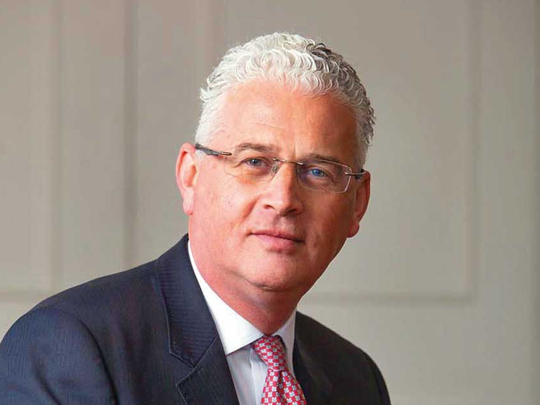
Dubai: The Access Bank UK Limited, a wholly-owned subsidiary of Access Bank Plc, a Nigerian Stock Exchange-listed company, has witnessed strong growth in its trade finance business linking the Middle East region with Nigeria and other sub-Saharan markets, Jamie Simmonds, CEO of The Access Bank UK told Gulf News in an interview.
The bank which began its Dubai operations from the Dubai International Financial Centre (DIFC) in 2015 said the DIFC office has become a regional business hub for the bank, attracting trade finance deals from across the Middle East and from Asia.
The bank works on a five-year plan and matches the liability side of the balance sheet with planned asset growth. In addition to the capital raised from its parent, the liability side is significantly supported by customer balances, Simmonds said.
Recovery in key sub-Saharan economies led by Nigeria is attracting Gulf investments into the region.
“Growing need for infrastructure investments in the region, particularly Nigeria, has resulted in significant growth in trade volumes leading to demand for trade finance solutions,” said Simmonds.
Faced with low commodity prices, the Nigerian economy went through a period of recession for more than a year. With improving oil prices, the economy is on recovery path.
The National Bureau of Statistics’ second-quarter gross domestic product (GDP) report indicated that the country had come out of recession, recording 0.5 per growth after experiencing negative growth for more than a year.
According to recent report from PwC Nigeria, after the economy bottoms, it could take about a year for real GDP to recover to pre-recession levels.
Subsequently, the economy expands for a period, which could often exceed five years, depending on the structure of the economy and the reforms implemented.
Simmonds said global trading houses have taken note of the recovery in the economy and the trading volumes are booming, opening up opportunities for Access Bank.
The early signs of economic recovery and stability in exchange rates are expected to boost confidence in trade. Nigeria tightened currency controls soon after crude prices crashed in 2014, which exacerbated an economic crisis, hammered importers and deterred investment.
Although the central bank has eased some trading restrictions this year — including by creating a foreign-exchange window for investors in which the naira is meant to float freely — the country is still stuck with import curbs and a system of multiple exchange rates, with spreads stretching almost 20 per cent.
Last month, CBN unified some of their rates when they let currency dealers quote naira levels used in actual trades. The move immediately weakened the naira’s interbank price 14 per cent to about 365 per dollar, near the parallel market rate, with the currency trading.
While exchange controls are likely to remain in place, government plans to increase spending to a record 7.4 trillion naira ($20.9 billion; Dh74.91 billion) this year, as part of a wider plan to boost the economic growth by pumping more crude, increasing farmlands and increasing infrastructure spending.
“The early signs of economic recovery in Nigeria is convincing and it holds promise for traders and infrastructure investors. While there is a huge demand for infrastructure in Nigeria, Dubai’s expertise in the area is expected to create significant opportunities,” said Simmonds.
In addition to pure trade finance, the bank also an asset management and private banking business. Going forward the bank plans to tap into wealth management opportunities as it develops more business relations in Dubai.
Recent data confirms that the slow economic turnaround of the sub-Saharan Africa (SSA) region continued in the second quarter. According to a preliminary estimate compiled by FocusEconomics, regional GDP increased 2.4 per cent annually in the second quarter.
Sub-Saharan Africa is expected to grow moderately this year, as volatile commodity prices and turbulent political scenes limit the recovery. GDP is seen expanding 2.5 per cent. Next year, regional GDP growth is seen gaining steam as the recovery strengthens. However, the evolution of commodities prices will be key to the economy’s trajectory.












